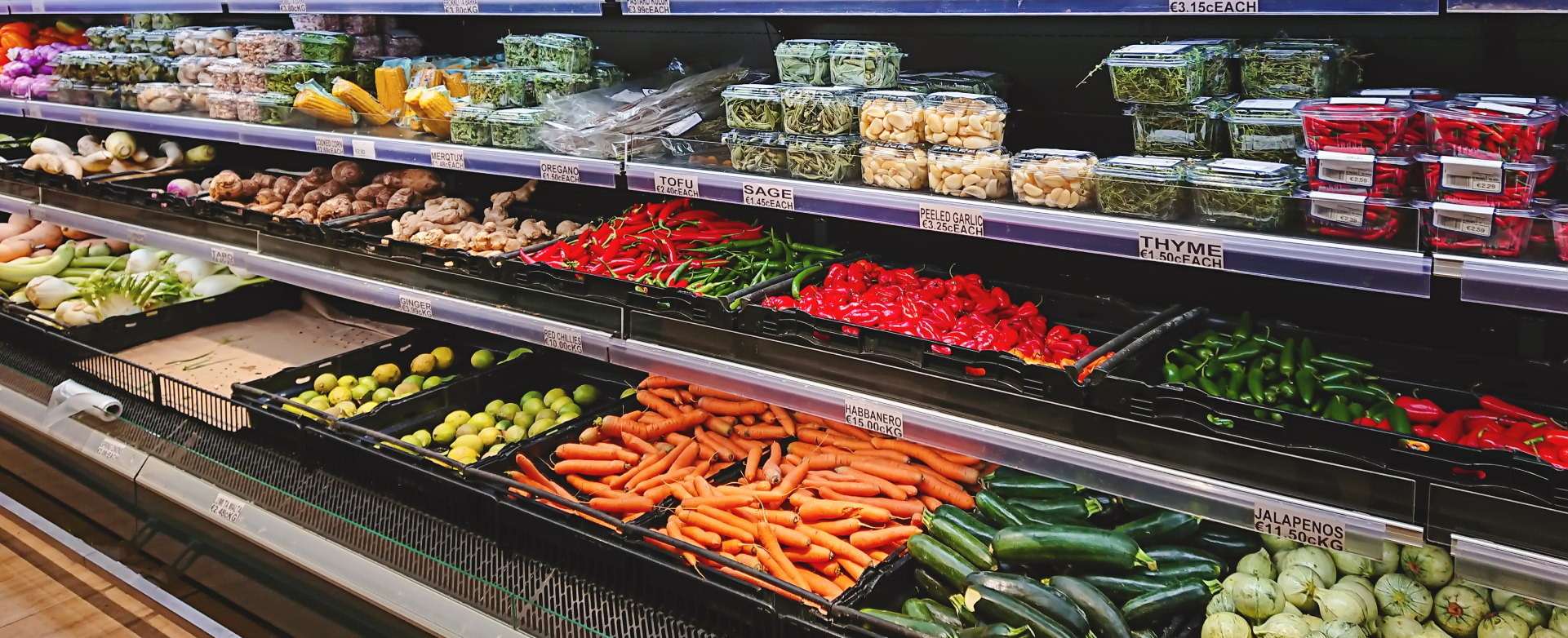
How to Improve Watermelon Quality Control
Common Defects when Growing & Harvesting Watermelons
-
Alternaria Leaf Blight
Caused by fungus, this can be recognized by small spots of a yellow-brown color, surrounded by a yellow or green tinge. Over time, these lesions will expand and become darker, and the leaves will curl and die. This form of leaf blight usually occurs where there are high temperatures and a lot of rain. -
Alternaria Leaf Spot (Brown Spot)
Darker lesions might signify the presence of brown spot, which can often be seen in concentric circles, and is also caused by fungus. Usually, the spores are transmitted by wind and rain and then progressively impact the plants. You can lower the risk of brown spot by watering the plants at the base and using the right kinds of fungicides. -
Angular Leaf Spot
These lesions will have an angular appearance that expands in between the veins of the leaves. When it’s humid, you can see a milky looking substance that dries on the leaves and will become crusty. Over time, the legions get slightly darker and the edges become yellow or green. As the lesions dry, you may notice holes in the leaves. This is caused by bacteria and usually spreads through natural causes such as people moving between the plants, insects carrying the bacteria, or even splashes of rain. -
Anthracnose
This form of leaf spot is characterized by angular dark lesions on the leaves with a distinctive yellow border. It can also be seen on the stems and fruit themselves as lesions with sunken centers. You can rotate crops every couple of years to prevent build up of the disease. -
Aphids
These insects can infest a crop and live on the underside of the leaves and the stems. You can spot them by the sticky substance they secrete, which encourages other defects such as sooty mold, and can cause leaves to yellow and distort. -
Aster Yellows
You can blame leafhoppers for Aster yellows, where foliage turns yellow and the secondary shoots start growing out of control. You might see that leaves are small or distorted, and fruits grow smaller than they should and pale in color. This has a direct impact on ROI. -
Bacterial Fruit Blotch
Caused by bacteria, this defect will start as small, water-soaked lesions that quickly enlarge across the surface of the watermelon. Over time they might turn red or brown and cause cracks in the skin and flesh. More common in wet conditions, you can reduce the risk of fruit blotch by rotating crops and watering at the base. -
Blossom-End Rot
If your crop has a lack of calcium or the nutrients are disrupted, blossom end rot is a common defect to be seen in more immature fruits. Small light brown spots will grow close to the blossom end of the fruit, and then the spots expand over time to create dark, leathery lesions. As this is a nutritional disorder, ensuring you are watering plants regularly and evenly can reduce the risk. -
Cercospora Leaf Spot
On older leaves, you will recognize this form of leaf spot by the small spots with light brown centers. Lesions will get bigger over time, darker in color, and eventually may become brittle and crack. This is a progressive disease that can impact a whole crop, so you should quickly destroy impacted plants to prevent the spread, and remove any crop debris. -
Downy Mildew
This fungus is spread by water splashing on the plants or spores that are carried in the air, and will be characterized by leaves that curl inwards, and distinctive brown lesions that are on the leaves themselves. Keeping plants well spaced, watering them from below rather than using overhead irrigation, and ensuring you use the right fungicides can lessen the chances of mildew. -
Fusarium Wilt
If you spot that watermelon plants are wilting, especially if it appears to be localized to a specific vine, you may be seeing fusarium wilt. The foliage will look duller, with a grayish look, and then turn yellow as the disease progresses. Common ways that the issue spreads is through contaminated water and equipment, or through infected seed itself. -
Gummy Stem Blight
Look out for circular brown legions that can appear on the crown, stems or cotyledons of the fruit. They might ooze a sticky substance that’s amber in color, which explains the name! This is also caused by fungus, which is usually spread in the air or via water, and is especially problematic in warm and wet conditions, which is where watermelon plants thrive. -
Thrips
Think about where you plant your watermelons to help avoid the incidence of thrips. For example, planting the crop by garlic plants or onions can increase your likelihood of being plagued by this insect! You can recognize a thrips infestation by the stippling on the leaves, which may look silvery, or have black feces visible on the plant. -
Powdery Mildew
It’s easy to spot powdery mildew by the white powdery growth on the leaves, but you might also find it earlier in its progression by looking out for bronze or red discoloration on older leaves. This disease is more prevalent in dry weather with high humidity levels. To lower the risk of powdery mildew, plant where you get good air circulation and don’t overcrowd the watermelon plants. -
Verticillium Wilt
Verticillium wilt can be devastating for a watermelon crop, as leaves can collapse and the roots themselves can experience an impact, with discoloration of vascular tissue. You can recognize this issue by symptoms that only appear on one side of the vine. This is caused by a fungus, and usually appears in cool weather, often in the Springtime, so it can be helpful to plant later in the season once the weather is warmer.
 Interesting Facts about Watermelons
Interesting Facts about Watermelons
- 69% of watermelon production in the US is grown in five states: Arizona, California, Delaware, Florida and Texas.
- The average watermelon yield per acre in 2020 was 39,704 pounds.
- China, Turkey and India are three of the largest producers of watermelon in the world.
- Watermelon is healthy! It has more lycopene than any other fruit or vegetable, which is what gives it its red color, and has been linked to reducing age-related diseases.
- Early explorers used watermelons to carry water inside, instead of canteens. Drink up!
Common Quality Attributes for Growing and Harvesting Watermelons
- Sugar
- Diameter
- Firmness
- Acidity
- Internal color
The Clarifresh platform also integrates with 3rd-party technology to evaluate external tomato attributes. Learn more here.
Implementing effective watermelon quality control measures throughout the growing and harvesting process is essential for maintaining consistent watermelon quality standards that meet market demands. Modern watermelon quality assessment goes beyond traditional visual inspections to include systematic monitoring of these key attributes using both manual techniques and automated technologies. By establishing comprehensive quality control protocols that address both pre-harvest and post-harvest factors, producers can significantly reduce losses, improve customer satisfaction, and command premium prices in competitive markets. The integration of real-time quality monitoring systems allows for immediate adjustments to growing conditions and harvesting decisions, ultimately ensuring that only the highest quality watermelons reach consumers.




















